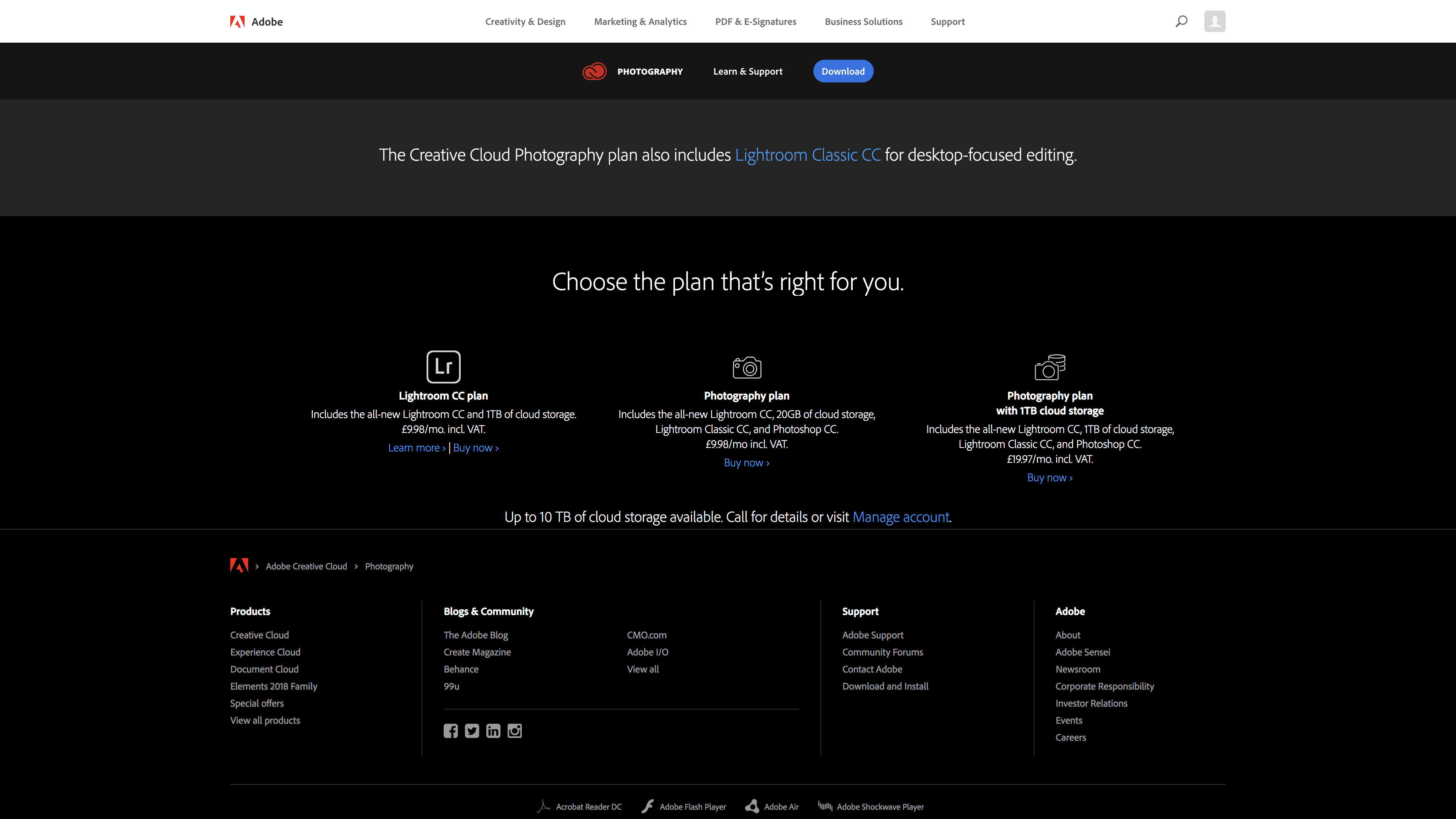

- #LIGHTROOM CLASSIC VS LIGHTROOM CC INSTALL#
- #LIGHTROOM CLASSIC VS LIGHTROOM CC UPDATE#
- #LIGHTROOM CLASSIC VS LIGHTROOM CC UPGRADE#
- #LIGHTROOM CLASSIC VS LIGHTROOM CC PC#
The plugin just handles the transfer of the file out of LrC to the Topaz application and then back into LrC.

The image is then edited in Topaz and when finished a copy is sent back to LrC. When you choose to edit a file in a Topaz product the plugin will create another copy of the image in LrC and launch the Topaz application. The Topaz or DXO products are stand alone products that have a plugin for applications like LrC and Photoshop. I have it setup so I can click on sync icon next to the collection and it will sync that collection to my Lr cloud version. I do this at times for collections in my LrC catalog that I may want to share when traveling. I haven't done this enough to give you good directions setup instruction but you might do an internet search and find a video tutorial on how this is setup.
#LIGHTROOM CLASSIC VS LIGHTROOM CC PC#
You could then edit the files using Topaz products on a PC and the edited version would then sync back to the cloud. Lightroom Classic is designed to sync collections you choose to the cloud version of Lightroom. What version of Lightroom are you using? Are you part of the Adobe Photography plan? If so, you can use both products if you want. Internet upload speeds can create very long wait time if you want to upload a large number of files and you have a limited amount of cloud storage space. The disadvantage for many of us is that the images have to be in the cloud to be edited. If you answered no, or are starting from scratch with the Creative Cloud, move on to question 3.The advantage of the cloud version is that you can access and edit your files from any device you choose. Accidentally upgrading to Lightroom CC will throw you for a loop - the new Lightroom CC is entirely different in form and function.
#LIGHTROOM CLASSIC VS LIGHTROOM CC INSTALL#
Both Lightroom Classic and Lightroom CC are available to install with your Photography Plan subscription. If you answer yes to this question and want to maintain your current workflow, make sure you’ve upgraded to Lightroom Classic CC - not the new Lightroom CC. If you answered no, or want to experiment with your workflow, move on to question 2.Īre you a current Adobe Photography Plan subscriber? Lightroom 6 and earlier are no longer supported, and are already missing a handful of can’t-live-without features.

#LIGHTROOM CLASSIC VS LIGHTROOM CC UPDATE#
Download and install Lightroom Classic to update your current Lightroom catalog. It includes Lightroom Classic CC, Lightroom CC, Photoshop CC, access to all of the mobile apps, and 20GB of online storage.
#LIGHTROOM CLASSIC VS LIGHTROOM CC UPGRADE#
If you answer yes to this question and want to stick with your current workflow, then it’s best to upgrade your current software by purchasing Lightroom Classic CC as part of the Creative Cloud Photography Plan. Because your originals are stored online, they’re automatically backed up as you work - as long as you have a decent internet connection.ĭo you currently own and use a stand-alone (perpetual license) version of Lightroom? It’s intended to provide a seamless experience across all your devices, and everything that you do in Lightroom CC is synced to the cloud. Lightroom CC is designed and built to be simpler, with less of a learning curve for newbies. The Lightroom CC ecosystem is a cloud-centric service with three device-based apps: desktop, mobile and Web. The old, familiar desktop-focused application is now called Lightroom Classic CC, and the new family of cloud-based software is called Lightroom CC. In October 2017, Adobe significantly changed the Lightroom lineup, offering multiple versions of its subscription-based Creative Cloud Photography Plan, and effectively discontinuing Lightroom 6, which until then had been available for purchase as a “perpetual license” rather than via a subscription fee.Įven for experienced Lightroom users, making sense of the new options can be confusing. It’s the perfect companion to Photoshop, and has been the photo-editing industry standard for more than a decade. Lightroom is Adobe’s professional level, one-stop shop for organizing, editing and sharing images.


 0 kommentar(er)
0 kommentar(er)
